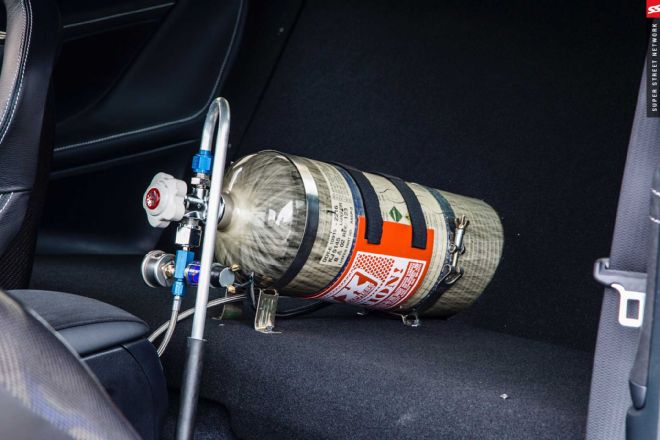How Nitrous Works
Whatever engine you've got relies on a combination of air and fuel to make power. Nitrous oxide, which, chemically speaking, is really just a mixture of two nitrogen molecules for every oxygen one, has the ability to let more air loose within your cylinders, which means more fuel can burn. And burning more fuel is what you really care about—not just because you want more power, but because you want to keep from turning your Civic's short-block into a pile of shrapnel.
How it works isn't all that complex: Nitrous oxide starts life as a high-pressure liquid that's typically stored in some sort of bottle and, once injected into your engine, converts into a gas, reducing intake air temperatures and increasing its density. This is all very good news if you care about going any faster.
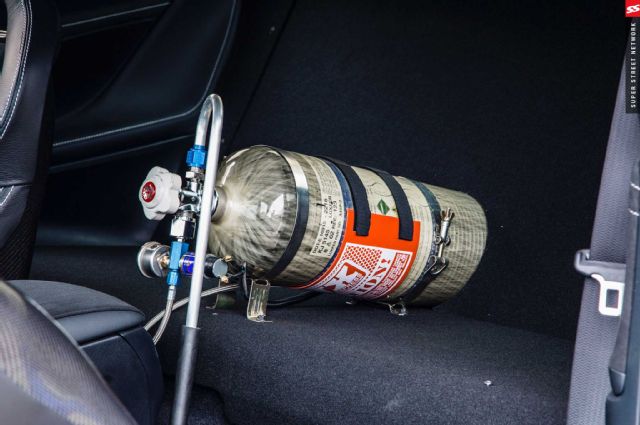 | Just in case the 467 hp from the 5.0L V-8 of the Lexus RC F we drove during last year's Gumball 3000 wasn't enough, we had a 100-shot Nitrous Express wet system at our disposal! Will nitrous work for you, too?
| Just in case the 467 hp from the 5.0L V-8 of the Lexus RC F we drove during last year's Gumball 3000 wasn't enough, we had a 100-shot Nitrous Express wet system at our disposal! Will nitrous work for you, too?
Nitrous in Action
The show starts with some sort of bottle that's been filled with the pressurized compound and is, presumably, mounted someplace in your trunk. A valve located on the bottle must be opened before anything good can happen, though, and should typically remain closed if plans to squeeze aren't in your immediate future.
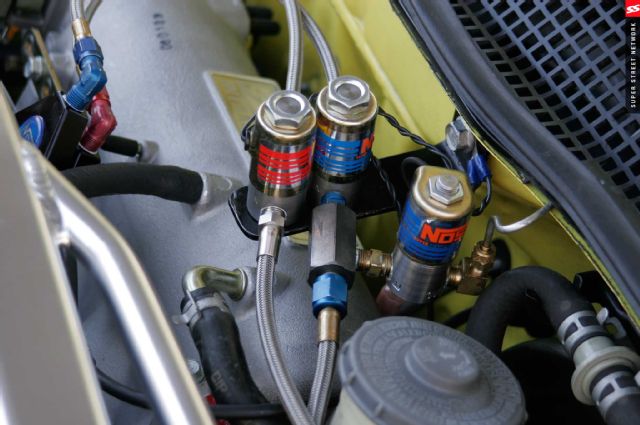 | How Nitrous Oxide Works Electric Solenoids
| How Nitrous Oxide Works Electric Solenoids
Meanwhile, someplace underneath the hood, a pair of electric solenoids awaits the signal to activate all of this and allows nitrous oxide and, in most cases, additional fuel to make their way into the combustion chambers. That signal can be as simple as you flicking a switch as soon as you realize the Camaro in the other lane is all of a sudden beating you or as complex as pre-programmed throttle, vehicle speed, or rpm parameters you set within whatever engine tuning package you've got.
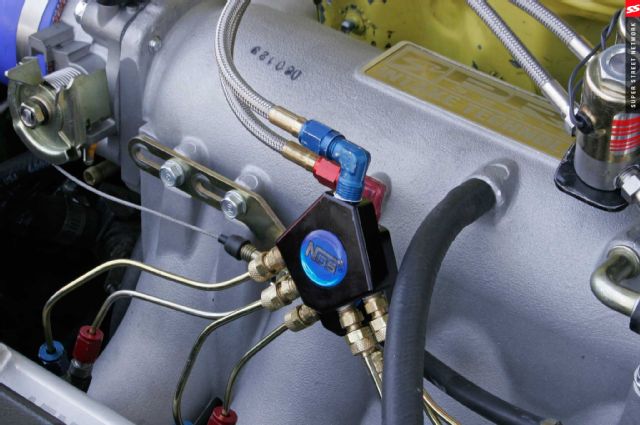 | How Nitrous Oxide Works Intake Manifold
| How Nitrous Oxide Works Intake Manifold
A thorough nitrous system is also made up of all sorts of lines and fittings that connect the bottle to the solenoids, the intake manifold or piping, and the existing fuel system. Once it's reached the engine, metering jets distribute the right amount of nitrous oxide and fuel into the cylinders through some sort of injector or nozzle that's been threaded into the intake manifold or piping.
Is Chemical Induction for You?
If you're cheap and looking for quick and easy horsepower, then nitrous oxide might be for you. No other way are you going to be able to add more than 100 hp for less than a thousand bucks, all in an afternoon's work.
Installing a nitrous system might not take a whole lot of time, but that doesn't mean any bonehead with his own set of wrenches is up for the job. Calibrate those jets wrong or drill and tap for those nozzles like you've never done it before, for instance, and you could be down a whole lot of power or end up with an expensive pile of scrap metal. Use your head, though, install your system thoughtfully, be realistic when it comes to power goals, and your nitrous-induced engine can last for years.
The Pros
+ Most cost-effective power-adder
+ Installs quickly and easily
+ Can be easily disabled and uninstalled, leaving almost no evidence
+ Traction control alternative for high-power drag cars
The Cons
- Easy to abuse
- Doesn't last forever
- Bottle pressure and temperature must be maintained
Lies and Myths
It'll blow the welds off my intake manifold: Not necessarily. With the right amount of fuel accompanying all of this, nitrous oxide injection doesn't present a whole lot more wear on an engine than a turbo system would.
It's flammable: Except that it isn't. By definition, N2O can't burn, but its oxygen molecule can aid the combustion process once released, which is what makes all of this work. (Fast and Furious, you lied to us!)
It's cheating: Using nitrous won't make you any more of a cheater than any other form of forced induction would. The bad raps come from its ability to be concealed, leading others to believe there are no additional power-adders.
80-shot means 80 more horsepower: Not always. Nitrous system makers rate their kits at flywheel horsepower, which means an 80-shot is more like 60-70 whp. Even then, numbers can vary a whole lot depending on engine configuration, bottle temperature, bottle pressure, and all sorts of other factors.
Nitrous will destroy my catalytic converter: It won't. That's mostly because the amount of time nitrous is actually injected into an engine is so minimal. Also, in some cases, the whole oxide part of the equation can make a cat more efficient.
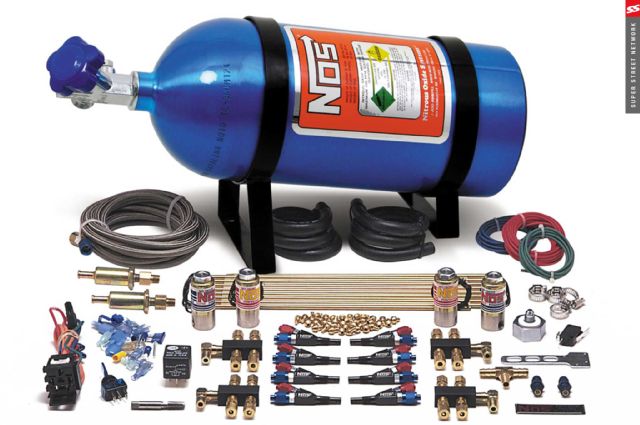 | You can get into an entry-level nitrous kit with everything included for just a few hundred bucks. Cheap but temporary power...
| You can get into an entry-level nitrous kit with everything included for just a few hundred bucks. Cheap but temporary power...
How to Apply it
Nearly every nitrous system is shipped with some sort of wide-open-throttle switch that, when flicked, switches on the solenoids. These sorts of systems mean you don't have to use your brain—just your foot—and beat any sort of steering-wheel-mounted push-button. More elaborate solutions include standalone progressive controllers that allow for more linear nitrous distribution throughout the powerband and tunable ECUs that feature outputs for nitrous control that can be trigged based on any number of user-set parameters.
Temporary Horsepower
The average nitrous system can yield as little as 25 hp to more than 10 times as much. No matter the kit, though, sooner or later it'll run out. When, exactly, depends on all sorts of variables, like bottle size and pressure, jet sizes, delivery method (fixed or progressive), and how often it's used. Typically, a four-cylinder engine using a 100-shot with the factory-supplied bottle can get away with about 20 squeezes before having to refill it all over again.

